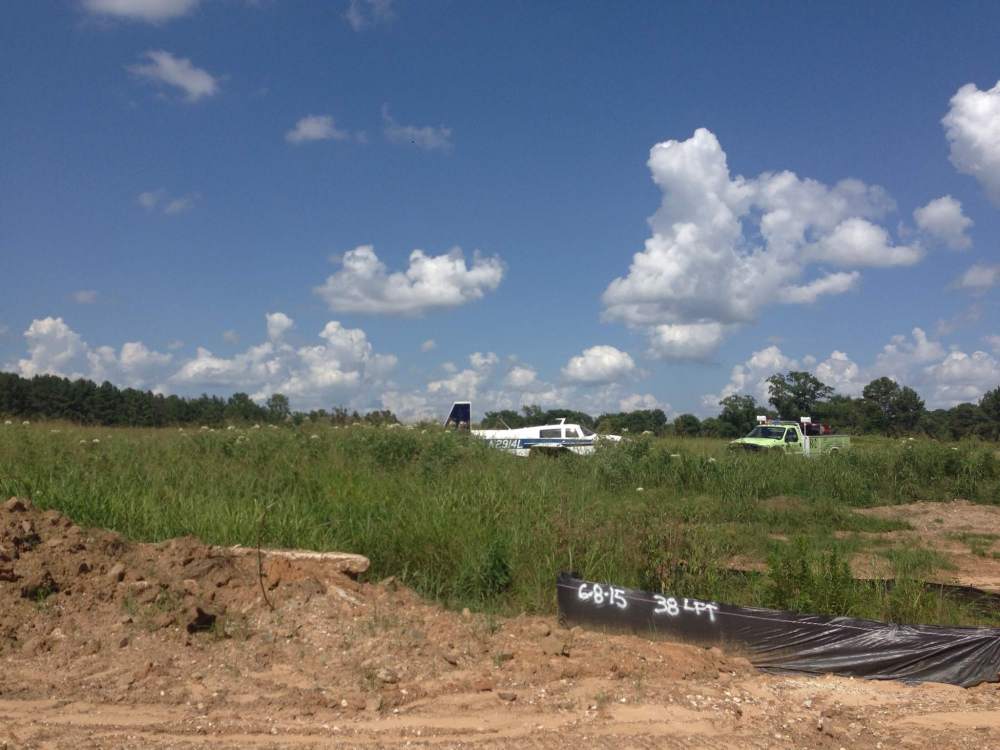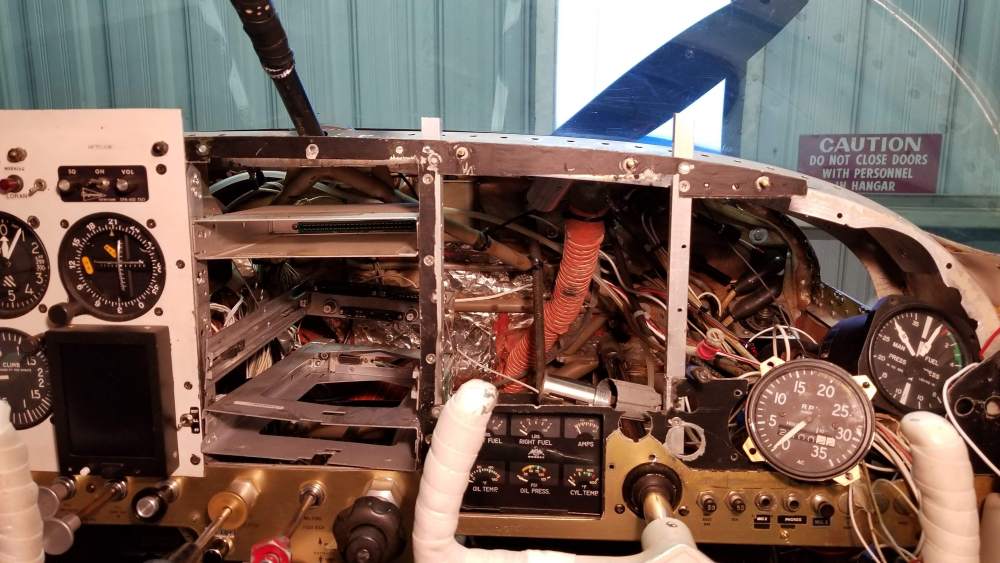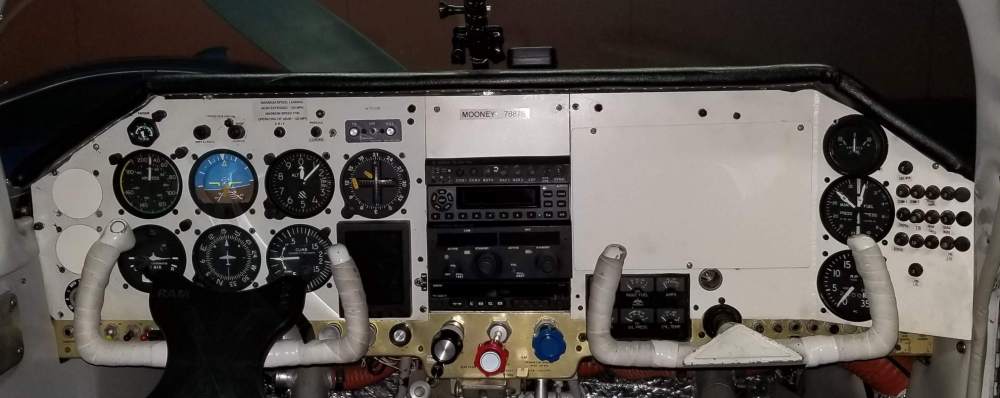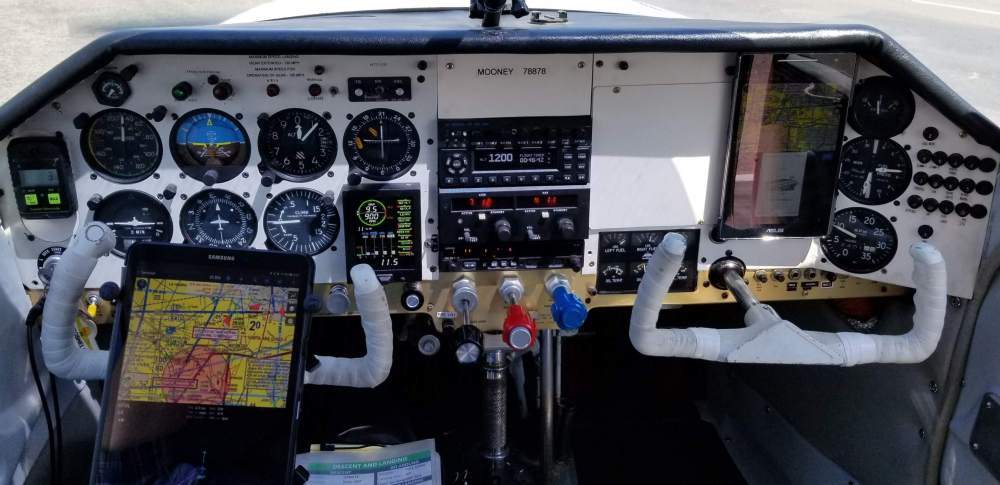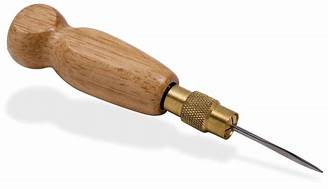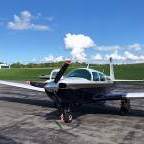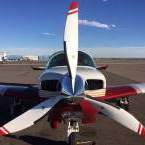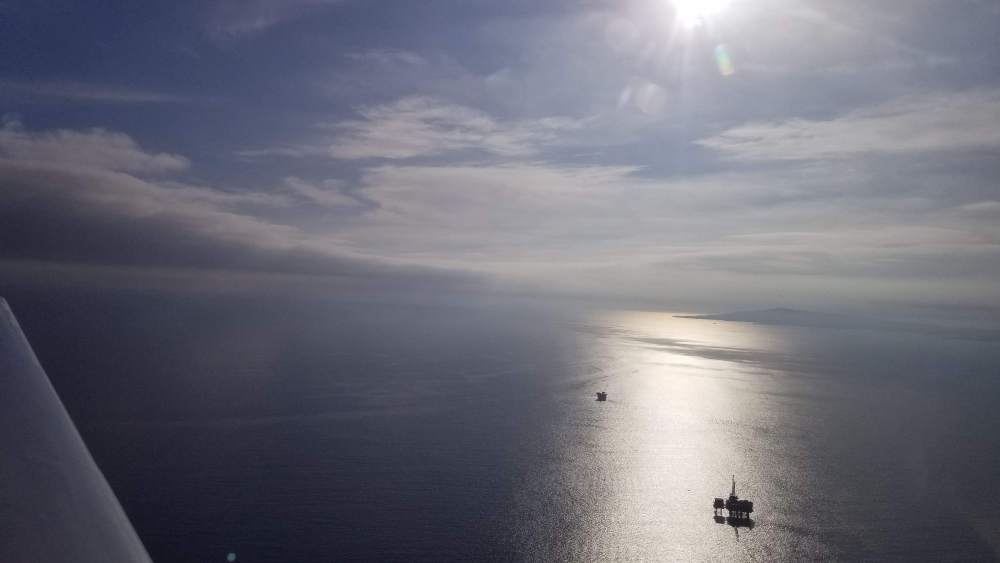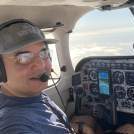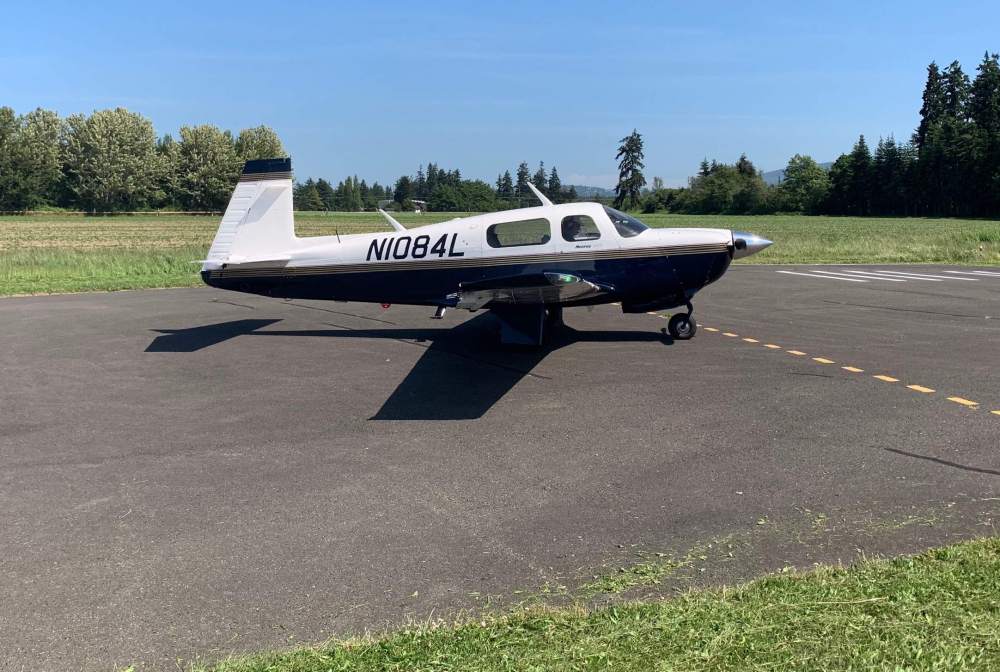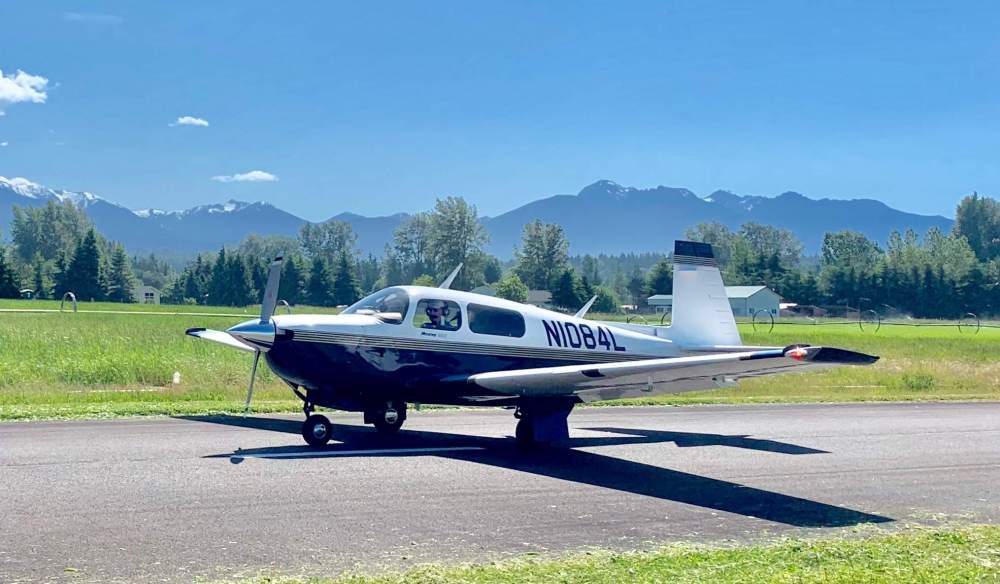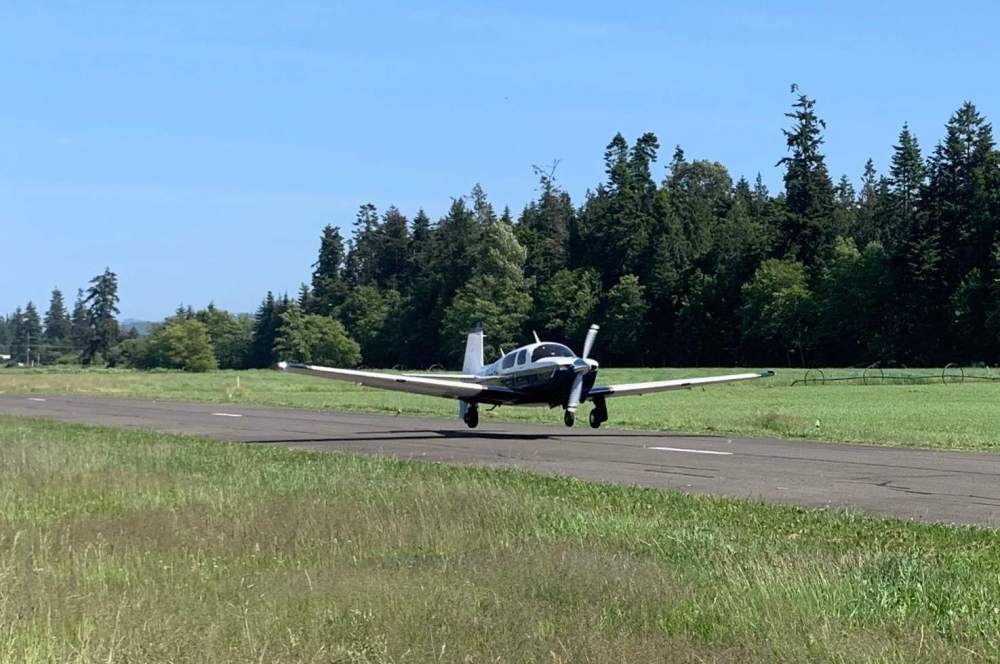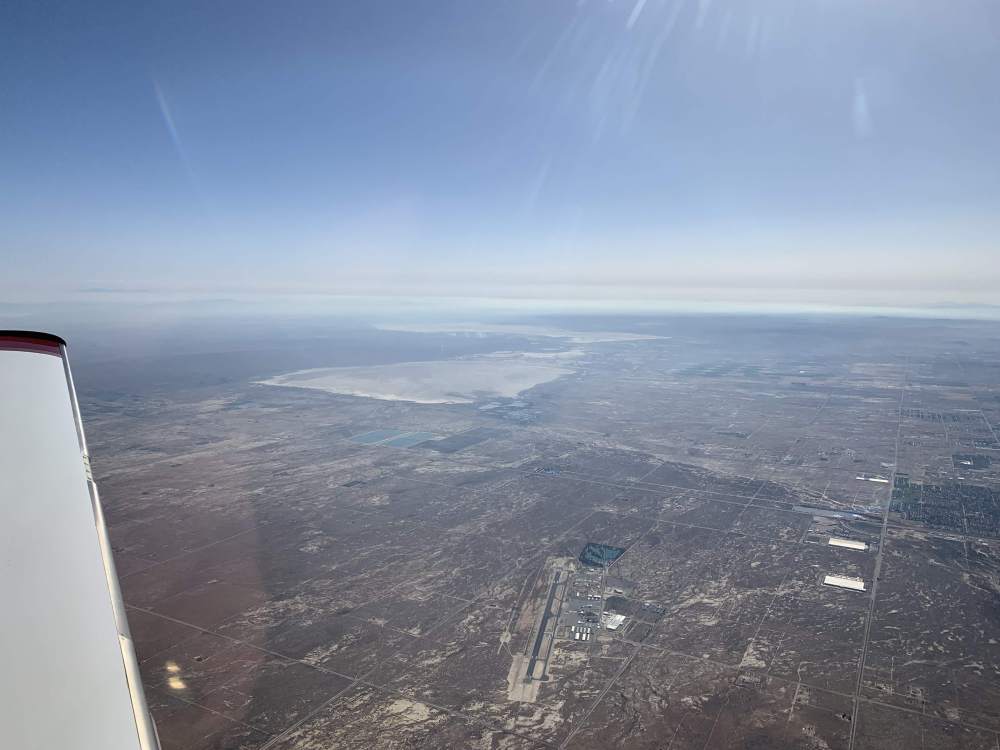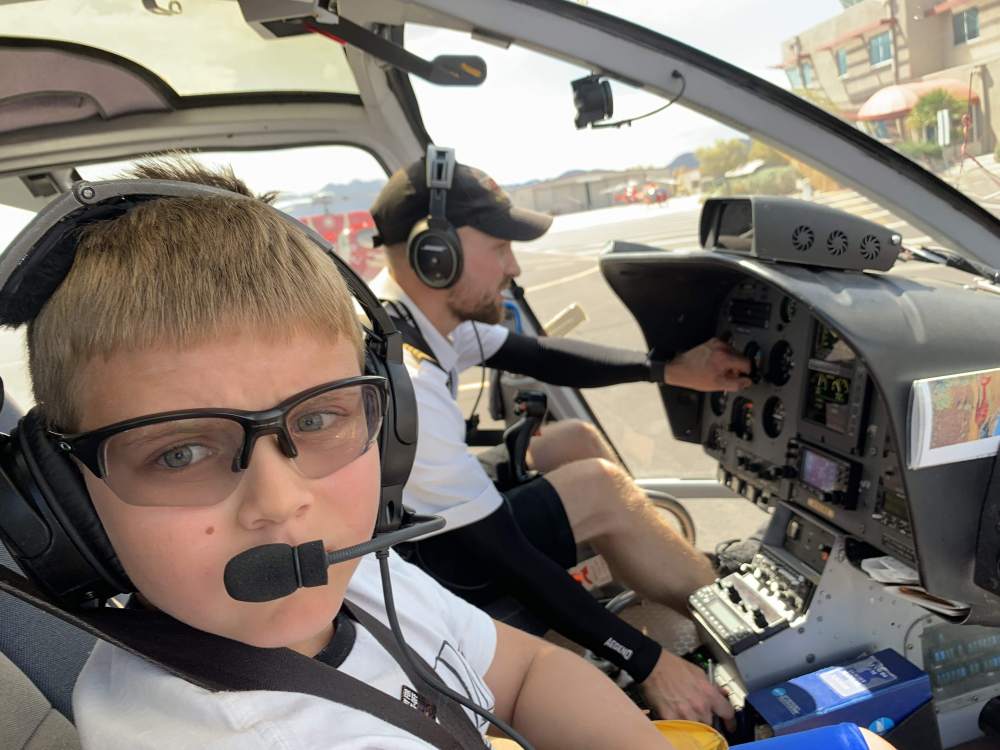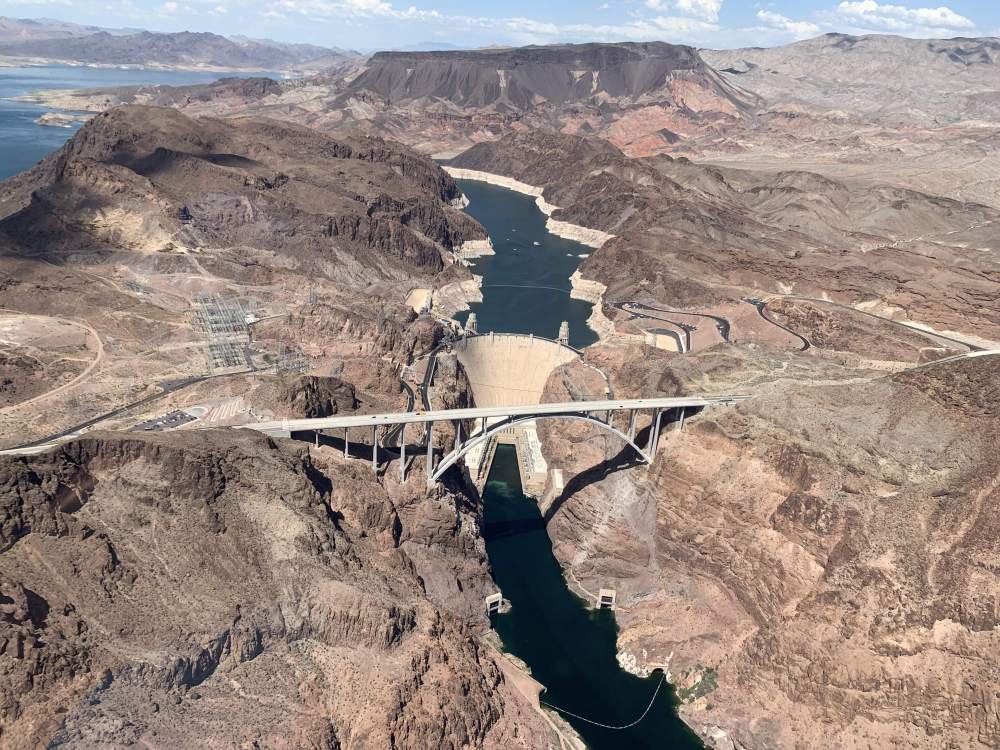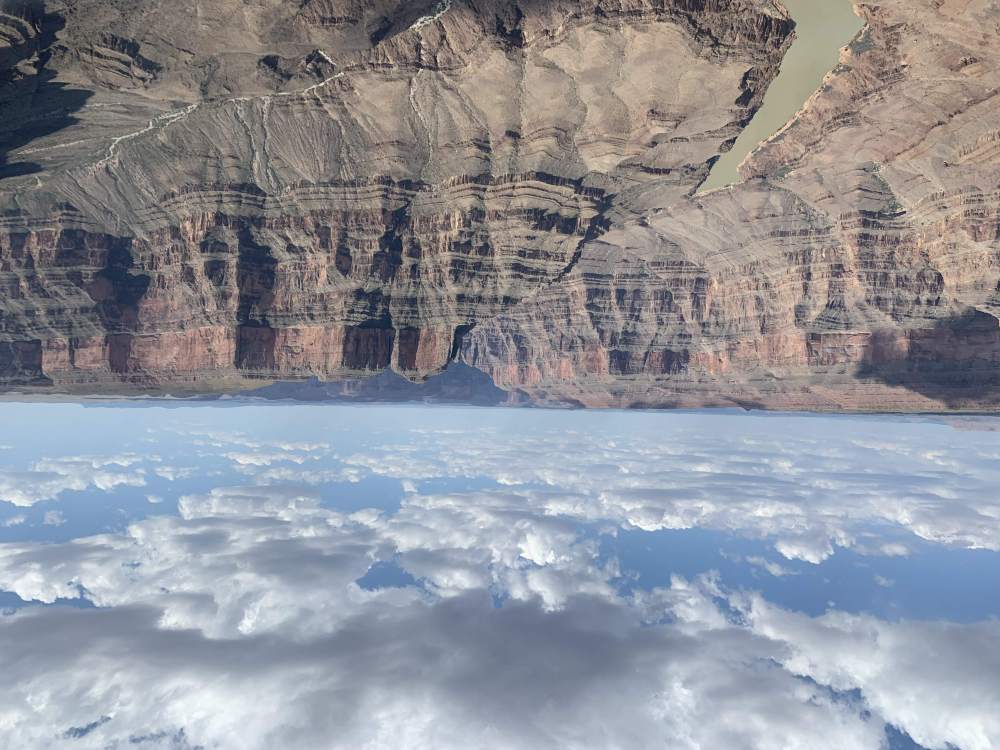Leaderboard
Popular Content
Showing content with the highest reputation on 06/02/2019 in all areas
-
5 points
-
5 points
-
Having done a cowling mod very similar to the SWTA cowling on mine and 3 other aircraft, it’s very labor intensive. That and the fact that it only will work on certain year models is the reason I switched to doing a full new cowling. My new cowling will fit the early model Mooney’s all the way up to and including the J models. It will be much less labor cost to install. I was able to get some valuable data from the 4 airplanes I modified and put that into my new cowling. David4 points
-
I have not done power off 180s in the Rocket yet. It’s something I need to practice along with going up to altitude and testing elevator authority at different trim settings and speeds. The a major variable with the rocket (and a difference between ours) is the full feathering prop. I don’t know if it’s a good idea to feather it in the air outside of an actual emergency, and even then, there exists the chance of recovering the engine and then being unable to get the prop to unfeather. When I had my failure in my m20f, my issue wasn’t making it to the field, it was slowing down to get there. The sight picture at the time of my realization was that I could see the end of the 10,000ft runway and the 1,000ft marks were about in the middle, so I was at 130mph at 200ft and had 2,000ft of runway underneath me. I stood on the rudder, pulled back on the yoke, loaded the wing as much as I could and dumped in full flaps; my passenger made a hand gesture towards the gear handle. I thought “good idea” (for adding drag). In my practice with my m20f I noted that getting below 100mph before a slip would shorten my glide distance. I’ll say that in spite of that, she kept wanting to pick up speed. As I got just over the field I was back up to around 100mph. I thought “fuck it” and forced it down. It bounced and lost a lot of speed. After a couple more bounces, I’m rolling fast and the field dropped out from under me. It was a steep downsloping runoff field that, when not covered in 4ft weeds, has the appearance of a dry delta with all the little eroded channels in it. As I continued rolling quickly through the weeds I for a brief instant had the sobering thought regarding my own life: “shit. Is this all there is?” I also remembered being ready to dig in a wing and ground loop the airplane if necessary as the end of the field and neighborhood approached. The plane felt like it had settled on its mains so I applied the brakes and came to a stop. I had 805 hours total and 600 hours in the Mooney when that happened. While I dropped the gear to slow down, the gear ended up buffering my touch down, protecting the airplane and control surfaces, and allowing me to maintain control authority after touching down. If making it was an issue, I would keep the gear up until I was certain I had the field made and then throw in all the drag at once. I was trained to imagine the center of the runway as my target, not the threshold, and to make adjustments on short final.3 points
-
3 points
-
So basically pooey to anyone under the age of 45 owning a plane. I reject your reality and substitute my own. I got 0% APR for 48 months and just did a balance transfer and got another 48 months at 0% APR on my plane. Probably wont work for a $150k Ovation, but for a vintage shortbody, a personal line of credit via most local banks or in my case, CapitalOne, works just fine. No lien holders, no scanning logbooks, no hassle. As was stated earlier, its much better to keep cash in a higher earning line of interest right now. I'm dumping all of my spare cash into my 401K and Roth IRAs with the returns I saw last year, is a no-brainer.3 points
-
3 points
-
2 points
-
According to flightradar24, only two planes made it to Catalina yesterday both flew low and below the clouds. I am not a good swimmer and my IFR personal minimum is 1000 feet ceiling specially after 2 hours of flying and navigating LAX. we had a 500 feet ceiling when I was circling above the airport which is below the minimum for both approaches. We Ubered to Baker's Table after landing at Santa Ynez which turned out to be almost across the street from the airport. The driver suggested to go hang in Solvang after lunch, which we did. I highly recommend Baker's Table if you are ever at Santa Ynez. Small menu but great people and fantastic food.2 points
-
I don't think there is a one sized fits all answer here. The gear, even if being ripped of the airframe are helping to dissipate energy. Then you have the problem of, what if one digs in or rips of first? Now you are in for a wild ride. For me, in every single engine retract I have flown, unless I know the condition of the surface (i.e. road, golf course) I am leaving the gear up.2 points
-
If it was a short, it would trip immediately. It sounds like the switches / breakers are getting tired. This problem is fairly common in the older planes. in addition, if your landing light switch is next to your nav light switch, it may be producing heat which can cause both trip. Keep in mind, that incandescent landing light is pulling 18 amps. [emoji44]. And your navlights are pulling 7.5. The first thing I would do is switch out your landing light to an LED and do the same with your nav lights. There are a few manufacturers who make LED nav lights that are direct replacements for the bayonet bulbs. Check out Aerolites. This will reduce the load on your system dramatically. Sent from my Pixel 2 XL using Tapatalk2 points
-
2 points
-
Took my CFI down to o69 so he could ferry a very nice 1970 E back to 1o2 for service. Definitely made a difference having just flown a few days ago much less rust on the PIC. After we turned off the runway his only comment was nicely done. Was definitely a more challenging flight as he (being an) instructor made sure there were plenty of questions asked of me about lots of different requirements of flying. I think he likes to keep me a little distracted to see how I perform throughout the entire trip. As always Snoopy performed beautifully. It took a bit of effort to get there but our little Mooney is about as reliable an airplane as one could hope for.2 points
-
Many eyewitness accounts from different areas of the Jersey shore of him flying 3-5ft over the water along the coast for approximately 30 +\- miles before the point of impact. One witness in the water said she could of reached up and touched the bottom of the plane. There also reports of the same plane doing the same thing days prior to the accident day. This kind of behavior is not conducive to a long life. I think this may have been a one way rental2 points
-
A couple more comments. Another technique I've read about that should make the impossible turn more possible has to do with the departure. If we depart straight ahead, lose an engine, and decide to return; the initial 180 will put us in a position offset to the side of the runway so we will have to turn more than 180 degrees (210?) and then line up with the runway, so maybe 240(?) total? Instead of departing straight out, I've heard it suggested that we turn 30 or 45 degrees on departure. Then when the engine quits it does two things for us: 1) since part of our flightpath was offsetting to the side of the runway, it may be a simple 210 degree (for a 30 degree offset) or 225 degree (for a 45 degree offset) turn around to line up with the runway and 2) because of trigonometry, we will not be as far past the end of the runway. We will be the same total distance, but not as far along the extended centerline. Keep in mind, that turns are discouraged below 400' AGL (can't remember where that's written). Part of the reason that 45 degrees works so well is again because of trigonometry. At 45 degrees of bank, both sin(45) and cos(45) = .707 so we are getting equal forces working to hold us up and turn us. That totals 1.414. With less bank (30 degrees for example) we are increasing the vertical lift component (.866) at the expense reduced turn performance (.5). That totals just 1.366. Same thing if we increase to 60 degrees of bank, but the numbers are reversed. Total of 1.366. If you increase to 90 degrees or reduce to 0 degrees you get a total of 1.0. 45 degrees just gives you the most bang for the buck.2 points
-
Guys, I know thread drift is fun, but can we save sniping each other debating trending political issues on one of the threads which is not about the loss of an aviator in a tragic accident. Whatever you may think of the pilot's behavior, it is still a tragedy, and please also remember that the good folks at Airmods must be devastated. Out of respect for those who are more closely emotionally involved, and remembering that a man has died, please let's not make this thread all about you and your views on widely varying politics.2 points
-
Flying the airplane home with the new owner today. Really looking forward to the climbout...2 points
-
Geez Bob, I dont need to defend anything. I did it, close to the ground. VG's great if your'e looking for distance. We're not, we need to reverse, NOW! If you're engine quits at 600ft chances are you're still over airport property, or damn near. Do you need distance? You're not making a level turn, you're trading altitude/energy for angle.2 points
-
Damn! I might have upgrade to PerformancePlus because of this. And for the haters, complain all you like, but it's in the companies best interest to produce features attractive enough to get enough customers to upgrade to the higher subscription tiers. Until now, they haven't met that mark for me. But this might just do it. On a related note, my flight from Austin to Denver on Saturday was my first experience with the latest Avidyne IFD540 version 10.2.3.1 and it's improved integration with ForeFlight. It was absolutely the best upgrade since I started using ForeFlight 5 years ago and the IFD540 three years ago. The way ForeFlight can now display all ADSB data pulling from the built-in wifi on the IFD540 is really a game changer for me. This includes Radar weather, Cloud tops, Icing levels, winds aloft, and traffic. All of this without any Stratus, Sentry or any other external box to feed ForeFlight. it just gets everything directly from the IFD now.2 points
-
Video added. I was there for the 25th as well...weather looked like crap so I flew in on the 24th and stayed in Avalon and then came up at around 10am to watch everyone come in....it was quite a sh1*show! Fog on the 22 end of the runway so people were coming in on 4 with a tailwind and no good option for go-around. I saw the baron incident, there are now skidmarks all the way down half the runway and right over the 22 numbers. I also saw a guy in a cherokee try to land, go-around with a steep turning climbing 180 to stay out of the fog - did it again, and then finally make it. Glad no one got hurt. I posted the video over here on the r/flying reddit as well: https://www.reddit.com/r/flying/comments/bujnk0/catalina_airport_in_the_sky_reopening_fly_in_52519/ CatalinaVideo.mp42 points
-
I was going back and forth about whether to put in a skyBeacon and rely upon my old Narco transponder or bite the bullet and put in something from this century. Aircraft Spruce had a special for the GTX 335, GAE12, and GA35 plus a wiring harness. I asked my AP/IA (still getting to know the new one since moving to KFUL) if he had supervised any owner installs. He asked if I had done any electrical work on planes. I told him I had removed old avionics, made and run RG400 for the radios, replaced the ignition switch, starter solenoid, voltage regulator, and random stuff like bulbs. In theory this would be an easy install, just mount the tray, run the wires, and hook up power and ground. His response was, ok, let's do it. I reached out to @Aerodon to see if he could be Spruce's deal. I had bought a SL-40 and EDM-830 from him about 18 months prior. He gave me a price, I placed the order, and reserved my rebate just in time, five days before they ran out. I started pulling seats, interior panels, and the right side of the instrument panel to get ready for when the box showed up. There was more than once when I had the thing all apart that I thought, "Man, I have to remember how to put it all back together." First snag was when I found that the space above the #1 radio between it and the audio panel where I was going to put the transponder was not quite tall enough and required moving the radios down. I couldn't move the audio panel up because of the bars behind the panel. Other than it taking a lot more time than I thought the installation went smooth. My AP/IA put in the doubler for the GA35, it was going in place of the old loran antenna that had been installed with some jagged holes cut (not drilled) through the skin with no doubler sometime many years ago. The transponder check was perfect, it passed the ADS-B checkflight and I submitted the rebate on Saturday. All total I think I had about 21-22 hours in the install. The avionics guy that did the transponder check said most of the shops around here are charging 14 hours for a simple install that isn't connecting to a bunch of other things so I think I came out okay with the time I put in. If you want to read "the rest of the story" you can do that here, https://intothesky.us/2019/05/25/gtx335-installed-2020-compliant-and-preventative-maintenance/ I also had my AP/IA replace all the control cables. I couldn't find where the throttle and mixture had ever been done in the logs and the prop cable was done back in 1990. The new ones are smooth as butter. A few pictures, more pictures if you go to the blog post.1 point
-
1 point
-
1 point
-
Here is a picture of the inside of the tail cone with the pass through for all the wires. Is that supposed to be taped up? Sent from my iPhone using Tapatalk1 point
-
I live in Denver and am hangared at KBJC. I have owned a 231 for three years and think the turbo is very beneficial in this environment. Although you fly back and forth to Florida I am guessing you will want to explore all the wonderful mountain communities in Colorado. The turbo really helps at altitude during the warmer summer days. I flew to Telluride and was able to easily depart on a warm afternoon with a DA of 11,000’. The jets were all grounded and had to wait until evening or morning. As others have said, the 252 is better but at a higher price. A 231 with an intercooler and Merlyn upper deck pressure controller gives most of the performance of a 252 (agreed still a little less) but requires a little more pilot diligence. It is not that significant once you come up the learning curve. My airplane is in annual right now but I am happy to talk further and take you for a ride if you find your way to Denver. I think a 231 could be a good fit based on your mission. Long range tanks also really open up long flights. I flew to Florida a couple of months ago and could have made it with the favorable tail winds except weather forced me to stop short and overnight in southern Alabama. Warren1 point
-
Later in the day it started to clear around LAX/Long Beach but Catalina was still pretty well socked in. This was about 6pm yesterday looking towards San Pedro. The low clouds off the the left (towards Catalina) were lower and thicker the further south you went. Nice thing about Santa Ynez is that for about $10 you can Uber/Lyft into Solvang and there is some pretty good food there.1 point
-
To continue my thought, my answer is gear down, but try to get the mains to dig in first. If there’s something bad enough to hold a wheel, it’s also bad enough to grab a prop blade or spinner and I visualize a fast sliding plane hulk smashing itself, pivoting on the nose, putting tremendous force on the motor mount and flipping inverted lengthwise.1 point
-
1 point
-
This. My 74F had the same issue. Night flights would cause the switches (NAV, Landing and the odd time belly strobe) from time to time. They would be able to be reset after a short cooling period. I switched out the landing, belly strobe and NAV to LED at last annual. They haven’t tripped since.1 point
-
This is a great feature...but unfortunately they did not add the 205 to the list of enabled aircraft. I wrote to them and begged them to add it. They said they will note the request but could not promise when they will update with the 205 data. Anyone that has a MSE/ 205 / Allegro pls write them and maybe they will expedite.1 point
-
Click the performance profile, and you can adjust speed and fuel flow. I’ve worked with them a bit on this, and my SOP and default performance profile is 29x2500, with the speed reduced by 8% and FF by 5%. I’m finding that is dead nuts on. they are right now working on Acclaim vs Acclaim Type S. There are real differences in stall speed and landing differences between the two. Flap gap seals enable faster cruise, but of course, there is a cost... i have really enjoyed working with them on this stuff over the last six months or so. When rationalizing the cost of FF.... I remember what I spent on Jeppesen full east coverage, plus the time to do the updates and the confetti I’m still finding in the sofa... The cost of FF is very easy for me to rationalize. Or, as I like to say: “Sure, I rationalize, but that’s ok.” -dan1 point
-
A PMA (Parts Manufacturing Approval) only allows them to make the part for sale to certified airplanes (remember, LEDs do not qualify as standard parts). The STC (Supplemental Type Certificate, modifying the airplanes approved Type Certificate, (i.e, incandescent light bulbs that the airplane was certified with and they ARE standard parts) allows the LED part to be installed on a certified airplane. An STC will also spell out what airplanes (AML) that the STC is applicable to or what a/c parts can be replaced by the new part. Think about a new engine monitor system that replaces all your original engine gauges or the AML that shows what airplanes can install the new Trutrak autopilot (AML, Approved Model List). Each has an STC for installation on certified airplanes. Each has a PMA to allow it to be manufactured for sale to certified airplanes. The STC must be signed off on a 337 in each case, upon installation.1 point
-
This has been some great discussion, but at the end of the day, I'd love to channel Langewiesche and get his take on it. For me, it's time for a re-read of 'Stick and Rudder'.1 point
-
There's some support the DA40 is safer than, e.g., its C172 and PA28 contemporaries: https://web.archive.org/web/20130327152632/http://flighttraining.aopa.org/fsb/news/130322low-wing-may-equal-lower-risk.html Sent from my iPhone using Tapatalk1 point
-
1 point
-
Odd but not truly unusual. No quick disconnect, the brake just didn’t release like it was supposed to. Might be a worn connection linkage that bound up, or the mechanic leaned on it sideways and it jammed up. Keep an eye on it just in case but it probably won’t happen again in normal use. Definitely mention it at your next annual inspection so they check it closely. Of course, if anything goes hinky with that brake stop and get it fixed.1 point
-
Armatures. Get your brokerage account to add a margin account to it. Sell the security. Purchase the plane. Repurchase the security(s) using the margin dollars. Be sure that you are running a business of trading stocks. Write off the interest as a trading expense. Bonus points for getting the account listed as Mark to Market.1 point
-
I’d still recommend giving this a read, it also has the link to the full document from continental. https://www.sky-vu.org/2017/08/03/hot-starts-continentals-recommended-procedure/ maybe its it’s because I have the TSIO-520, but my symptoms are exactly as described in that article. Try a start with full rich, 1/4 throttle and no prime and it comes to life and within a few seconds dies again. Supposedly, this is from fuel vapor in the lines. In order to purge this paper, it recommends mixture cut off, throttle full and 20 seconds of the boost pump. This is done to purge any fuel vapor that may be still in the lines caused by the warm engine. I’ll give it a shot at some point and report back.1 point
-
The Cirrus Jet is constructed almost entirely from carbon fiber and was designed to absorb a CAPS ground impact from the first design drawing. When I mention spring steel I was talking about retrofits.1 point
-
More than that, I was in control of the aircraft until about 8' AGL, when a tree took over. (The tree gets a lot of the credit.) About 30' AGL I had to actively maneuver to avoid an apartment building. In the second situation (the emergency landing at Pt. Mugu), I was - miraculously - able to get the engine restarted and to make partial power, which made the NAS a viable (if inconvenient, for everybody) landing spot. The plane was reusable. I'm a big believer in flying until you can't. I'm not sure I would have pulled the 'chute in the first situation; if I hadn't gotten the engine back in the second situation, I would have gone slightly offshore and pulled it (especially vs. ditching with fixed gear). It's another tool in the chest. If I didn't think the SR20 was dangerously underpowered and too expensive, and if I could afford an SR22 and liked how it flew, I might have considered a Cirrus to replace 4BE. (I have about 75 hours (out of about 630 hours total) in SR20/22s). But the earlier (affordable) G1/G2 models suck for hand flying (that bungee-linked side stick), the avionics are getting really long in the tooth and not economically upgradeable (e.g., to go to a WAAS GNS, never mind a GTN, you have to somehow find and install an R8.2 version of the Avidyne Entegra PFD), the SR22's cost-per-hour is about double my Mooney, and the SR20, as noted before, can't climb better than 300 fpm 200 lbs under gross on a 72° day out of sea level (BTDT)... After 4BE, I was flying two days later (got shoved into the left seat and told to fly home, still sore and shell shocked). At a much higher altitude than I'd have typically flown before, and with that CAPS pin out (the owners of that plane never pull it, I now always do - it's on the checklist, it's getting done). The 'chute definitely gave me a boost in confidence. I'd love to see a Mooney with a 'chute, to be honest. (I'd love it even more if I could afford one.) I recently got checked out in the Sling LSAs that are renting at my home field for a little less than what it costs me to fly 3RM per hour(!). But I'll only fly the ones with BRS, 'cause I don't trust that Rotax engine all that much (friends are tower controllers at SMO - where Rotax powered SportCruisers are a significant portion of their training traffic - and speak of those things returning about once a week with a "rough running engine"). But I fly over a lot of mountainous terrain, where survivable landing options are few and far between. Mountain? 'Chute. Water? 'Chute. Desert? Eh, probably 'chute, but I'd get down low and near a road. (If there's an empty road: Road.) Nice thing about the 'chute, you can get down to ~750' AGL, see if there are power lines or other issues that will make that road no good, and yank the lever over something flat. Over a dense urban environment, at 10pm on a Friday night (highways and major roads were bumper-to-bumper)? Well, maybe I could find a deserted industrial area, or an empty stadium, or something, and maybe the 'chute would be an option I'd consider. Maybe not. Can't say. Honestly. The thought of coming down uncontrolled, into what might be a bus full of kids returning from band camp, or an apartment building full of the sleeping oblivious ...1 point
-
1 point
-
If we have excess airspeed we can use it one of two ways. We can do as Pete suggests, or we can start a level or even climbing turn at 45 degrees of bank until the speed bleeds off. Once it does we can lower the nose to maintain best glide while continuing the turn. We will in effect have completed some of the turn for free. I haven't tried this yet, but it's on my list of things to do when I'm not out on a mission or with my wife. The problem I see with using a lot of bank and max available G's is that speed is going to bleed very quickly. So unless we are well above best glide, by probably 30 or 40 knots (120 - 130 KIAS for my plane), we probably won't get much turn done before we're down to best glide. If we hold it too long we might stall or get well below best glide. This will require us to really bury the nose and unload to get the speed back. That's going to put us in a high sink rate that will require more energy to stop. While I think it could be done as Pete suggests, for us mere mortals I think 45 degrees of bank and best glide is a more realistic option. However, according to Prof David Rogers, for maximum performance we should be at a speed below best glide, but not much. If my calculations are correct, for a max gross weight airplane my best glide is 91 KIAS and the speed Prof Rogers advocates would be 86 KIAS. For those who like reading technical papers here is a link to his website: Prof David Rogers Scroll down and you'll find several articles about the impossible turn.1 point
-
A friend of mine has one on his C model. It looks nice and was a well thought out STC. The only thing he doesn’t like about it is the lower cowling fit by the spinner.1 point
-
While we are on it. Practice when the engine dies in take off configuration shoving the nose over. Should be immediate and with force by muscle memory. I don't even remember doing it when the engine hiccuped at Midland. Even in replay mode which I have done many times. Funniest part of that was the guy that was with me his dad is an AA pilot. His only response was "Get him up and flying again" I fixed the plane and flew it home so that was not an issue. Since I have another FR coming up I may just tell the Commander to go ahead and pull a bunch of stuff on me without warning and load me up see how I respond.1 point
-
1 point
-
Performing this maneuver at altitude is very different than flying it near the ground. Most of us don't fly steep descending turns below 500' AGL on a regular basis. Two things conspire to increase the risk of stalling: First, we have trained to pull g's in a steep turn to hold altitude and the primacy of this training is strong. In this maneuver, you have to unload the wing to keep the airspeed up. As the Navy guys say, "unload for knots." Second, the sight of a windshield filled with earth in unnerving and creates a very strong desire to pull the nose up which just tightens the spiral. The first effect is counteracted by practice. For the second, force yourself not to fixate on the view directly over the nose, but look up through the top of the windshield and all around from side to side to take in the big picture of where you are going. Skip1 point
-
1 point
-
I'm knee deep in the Commercial training in my 231 right now, its an excellent commercial platform. The chandelle is entered at a pre-determined airspeed (~120KIAS) and the throttle isn't touched throughout the maneuver. I have seen it done with throttle changes as the airspeed diminishes, but my instructor and the DPE that I'm using has no issue with my process in the maneuver, YMMV. Now, spot landings in any Mooney....all bets are off! I think a 231 with long range tanks would be just the ticket for the OP! Ron1 point
-
I was flying with a friend the other day and on run-up he had a rough running engine with high EGT and low CHT on one cylinder. We looked in the JPI manual and it stated that he probably had a burned exhaust valve. He called his mechanic and the mechanic said "A burned exhaust valve? Bullshit!!! You have a clogged injector!". So the mechanic came over with a can of carburetor cleaner, pulled the fuel line off the injector (injector still screwed into the head) and sprayed carburetor cleaner into the injector a few times until the fluid consistently went through the injector. He started the engine and it purred like a sleeping cat. The mechanic said that the injectors typically get clogged by lead in the cylinder that gets sucked up into the injector when the engine gets shut down. I thought it came from the other end (fuel system) but he said that there are so many screens that there isn't much chance of something large enough to clog an injector getting through. So, if you're going to get a clogged injector, you'll probably get it right at start up and not once you been in the air for a few minutes. So it sounds like this quick fix may save people a lot of time and money by not having to rely on an FBO somewhere in BF Egypt saying you need to top the entire engine. At a minimum, it can't hurt! Dave1 point




